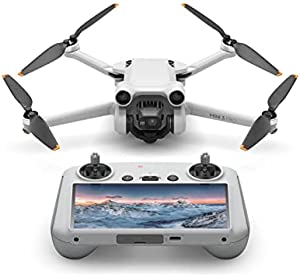If you're a cat owner, you know how important it is to provide your furry friend with the best possible nutrition. While dry food is a popular choice, many pet owners opt for wet cat food as it can provide more moisture and nutrients. In this article, we'll explore the world of wet cat food, including its benefits, how to choose the right one, and some potential drawbacks.

Who Should Choose Wet Cat Food?

Wet cat food is suitable for cats at any life stage, from kittens to seniors. It's especially beneficial for cats who struggle to stay hydrated or have medical conditions that require increased fluid intake. Additionally, picky eaters may be more likely to enjoy the taste and texture of wet food over dry kibble.
Some cats may not tolerate wet food well due to digestive issues or dental problems. If you're unsure whether wet food is appropriate for your cat, it's best to consult with your veterinarian first.
Summary:
- Wet cat food is ideal for cats who need more hydration or have medical concerns.
- Picky eaters may prefer wet food over dry food.
- Some cats may not tolerate wet food due to medical or dental issues.
What Is Wet Cat Food?

Wet cat food is a type of food that typically comes in cans or pouches. It contains higher moisture content and fewer carbohydrates compared to dry food. Wet food can be made from animal protein sources such as chicken, turkey, beef, or fish, as well as plant-based ingredients like grains and vegetables.
Wet cat food can be divided into two main categories: complete and complementary. Complete wet cat food has all the essential nutrients, including proteins, fats, vitamins, and minerals. Complementary wet cat food is meant to supplement a cat's diet and should not be the sole source of nutrition.
Summary:
- Wet cat food comes in cans or pouches.
- It contains more moisture and fewer carbs than dry food.
- There are two main categories: complete and complementary wet cat food.
When Should You Feed Your Cat Wet Food?

There is no set rule for when to feed your cat wet food. Some pet owners choose to feed their cats wet food exclusively, while others mix it with dry food. As a general guideline, cats should be fed 2-4 small meals per day, depending on their age, weight, and activity level.
It's important to note that wet cat food should not be left out for extended periods as it can spoil quickly. Any uneaten food should be discarded after 30 minutes to prevent bacterial growth.
Summary:
- There is no fixed schedule for feeding your cat wet food.
- Cats should be fed 2-4 small meals per day.
- Uneaten wet food should be discarded after 30 minutes.
How to Choose the Right Wet Cat Food
There are several factors to consider when choosing the right wet cat food for your pet. Here are some things to keep in mind:
- Protein source - Look for high-quality protein sources like chicken, turkey, beef, or fish. Avoid products with "meat by-products" or unnamed proteins.
- Carbohydrate content - Wet cat food should have lower carbohydrate content than dry food. Look for products with less than 10% carbohydrates.
- Additives - Check the ingredient list for artificial preservatives, colors, or flavors. These can potentially harm your cat's health.
- Brand reputation - Choose well-known brands that have a good reputation for quality and safety.
- Age-specific formulas - Some brands offer wet cat food formulated for different life stages, such as kittens or seniors.
Summary:
- Consider protein source, carbohydrate content, additives, brand reputation, and age-specific formulas when choosing wet cat food.
- Look for high-quality protein sources and low carbohydrate content.
- Choose well-known brands with a good reputation.
Pros and Cons of Wet Cat Food
Wet cat food has its share of advantages and disadvantages. Here are some pros and cons to consider:
Pros
- Higher moisture content - Wet cat food can provide more hydration than dry food, which is beneficial for cats who don't drink enough water.
- More nutrients - Wet cat food contains more vitamins and minerals than dry food.
- Tastier - Cats often prefer the taste and texture of wet food over dry kibble.
- Easy to digest - Wet food is generally easier on a cat's digestive system.
Cons
- Spoils quickly - Uneaten wet food should be discarded after 30 minutes, which can lead to waste.
- More expensive - Wet cat food tends to be pricier than dry food.
- Can contribute to dental problems - Wet food can stick to a cat's teeth and potentially cause dental issues.
Summary:
- Wet cat food has higher moisture content and more nutrients than dry food.
- Cats often prefer the taste and texture of wet food and it's easier to digest.
- Wet food spoils quickly, can be more expensive, and may contribute to dental problems.
Alternatives to Wet Cat Food
If you're not keen on feeding your cat wet food, there are several alternatives to consider:
- Dry cat food - This is the most common type of cat food and is generally less expensive than wet food. However, it has a lower moisture content and may not be as nutritious.
- Raw food diet - Some pet owners choose to feed their cats a raw food diet consisting of uncooked meat, bones, and organs. However, this requires careful preparation and may pose health risks to both pets and humans.
- Homemade cat food - If you have the time and inclination, you can prepare homemade cat food using fresh ingredients. However, this requires research and careful planning to ensure that the food meets all of your cat's nutritional needs.
Summary:
- Alternatives to wet cat food include dry food, raw food diet, and homemade cat food.
- Each alternative has its own set of advantages and disadvantages.
Step-by-Step Guide: How to Transition Your Cat to Wet Food
If you're planning to switch your cat from dry food to wet food, it's important to do so gradually to prevent digestive upset. Here's how to transition your cat to wet food step-by-step:
- Start by mixing a small amount of wet food with your cat's usual dry food. Gradually increase the proportion of wet food over the course of several days.
- Monitor your cat for signs of digestive upset, such as vomiting or diarrhea. If you notice any issues, slow down the transition process.
- Once your cat is eating a mix of wet and dry food, you can gradually decrease the amount of dry food until your cat is solely eating wet food.
- Ensure that your cat is drinking enough water, as wet food alone may not provide sufficient hydration.
Summary:
- Transition your cat to wet food gradually over several days.
- Monitor for signs of digestive upset and adjust the transition process as needed.
- Ensure that your cat is drinking enough water.
How Wet Cat Food Compares to Dry Cat Food
Wet and dry cat food have several differences in terms of nutritional content, cost, and ease of use. Let's compare the two types of cat food:
Nutritional Content
Wet cat food generally has a higher moisture content and more protein than dry food. It also tends to have fewer carbohydrates and calories per serving.
Dry cat food is more convenient to store and serve but may not provide as much hydration or nutrition.
Cost
Wet cat food is typically more expensive than dry food, although prices vary depending on the brand and quality.
Ease of Use
Dry cat food is easier to store and serve than wet food. It doesn't spoil as quickly and can be left out for longer periods without risk of bacterial growth.
Wet cat food requires more careful storage and disposal due to its higher moisture content.
Summary:
- Wet cat food has a higher moisture content, more protein, and fewer carbs than dry food.
- Dry cat food is more convenient to store and serve and is generally less expensive.
- Wet cat food requires more careful storage and disposal.
Tips for Feeding Your Cat Wet Food
Here are some tips to keep in mind when feeding your cat wet food:
- Follow the manufacturer's instructions for portion size and feeding frequency.
- Store wet cat food properly to prevent spoilage. Opened cans should be refrigerated and used within three days.
- Offer your cat water alongside their wet food, as it may not provide sufficient hydration alone.
- Avoid feeding your cat from plastic dishes, which can harbor bacteria.
- Monitor your cat's weight and adjust their portion size accordingly to prevent obesity.
Summary:
- Follow manufacturer instructions for portion size and feeding frequency.
- Store wet cat food properly and use within three days of opening.
- Offer water alongside wet food and monitor your cat's weight.
The Best Wet Cat Foods on the Market
There are several high-quality wet cat foods available on the market. Here are some of the best options:
- Royal Canin Feline Health Nutrition - This brand offers a range of wet cat food formulas designed for different life stages, breeds, and health conditions.
- Hill's Science Diet - This brand features high-quality protein sources and contains no artificial colors, flavors, or preservatives.
- Blue Buffalo Wilderness - This brand uses real meat as the main ingredient and is free from poultry by-product meals, corn, wheat, and soy.
- Weruva Cats in the Kitchen - This brand offers a variety of grain-free wet cat food recipes featuring high-quality proteins like chicken, beef, and tuna.
Summary:
- There are several high-quality wet cat food brands available. -Some of the best options include Royal Canin Feline Health Nutrition, Hill's Science Diet, Blue Buffalo Wilderness, and Weruva Cats in the Kitchen.
FAQs
- Is wet cat food better than dry cat food?
Wet cat food has its advantages, particularly in terms of hydration and nutrition. However, both wet and dry cat food can be healthy options for your cat depending on their individual needs.
- How much wet food should I feed my cat?
The amount of wet food you should feed your cat depends on their age, weight, and activity level. Follow the manufacturer's instructions for portion size and adjust as needed based on your cat's appetite and weight.
- How long can wet cat food be left out?
Uneaten wet cat food should be discarded after 30 minutes to prevent bacterial growth.
- Can I mix wet and dry cat food?
Yes, you can mix wet and dry cat food. Gradually increase the proportion of wet food over several days to allow your cat to adjust.
- What should I do if my cat doesn't like wet food?
If your cat doesn't like wet food, try offering different brands or flavors. You can also try warming the food slightly to enhance the aroma.
Conclusion
Wet cat food can be a convenient and nutritious option for your feline friend. It provides hydration and essential nutrients that may not be present in dry food. When choosing wet cat food, consider factors such as protein source, carbohydrate content, additives, and brand reputation. Remember to transition your cat to wet food gradually and monitor for signs of digestive upset. By following these tips and guidelines, you can provide your cat with a balanced and satisfying diet.


